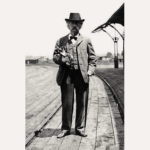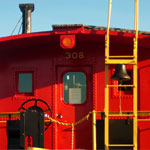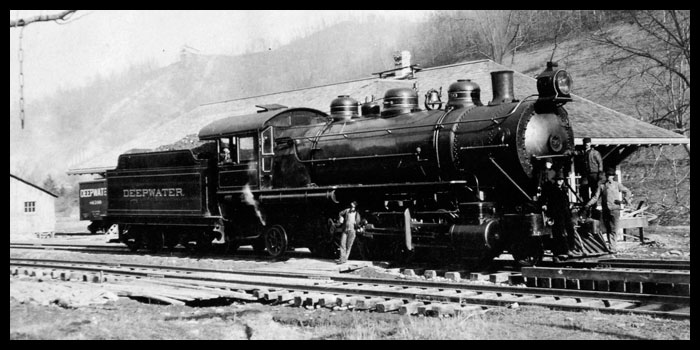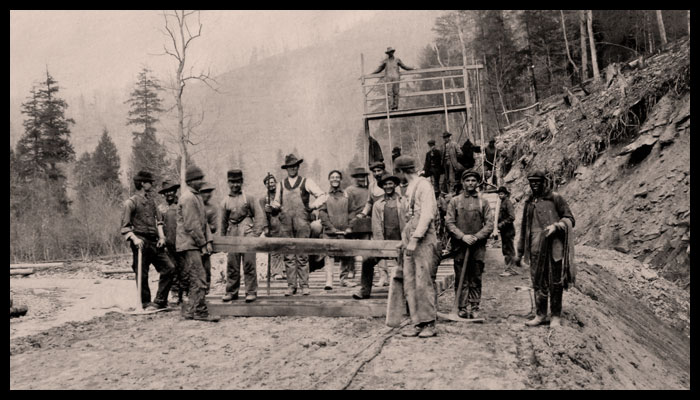history
now browsing by category
History of the Virginian Railway
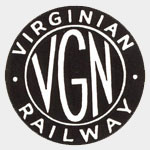
Known as the “Richest Little Railroad in the World,” the Virginian Railway was formed in 1907 through the ‘marriage’ of the Deepwater Railway in West Virginia and the Tidewater Railway in Virginia.
Financed by Henry H. Rogers, one of the wealthiest men in the world, the Virginian proved itself as a modern well engineered railroad that could operate more efficiently than its larger competitors.
The Virginian Railway extended from Sewells Point, on Hampton Roads, Norfolk, Virginia, to Deepwater, West Virginia, a distance of 443 miles. It existed from 1909 until 1959, when it wasbought out by Norfolk and Western.
Directness of route was the primary goal of the engineers who planned the path of the Virginian. To achieve this objective, the mountainous terrain had to be overcome by the construction of a series of tunnels, bridges, and cuts. More attention was paid to grades and alignment than had ever been done in the building of a railroad. Cost was of no consideration. ” Nothing is too good for my railroad,” said the founder, Henry Huttleston Rogers.
Plans were for this railroad to be a scientifically constructed and equipped railroad. Revolutionary concepts and ideas were put into action. Unlike the practice of the more established rail systems in routing their lines expressly to reach populated locations, with passenger traffic the primary goal of their service; constructing them a piece at a time as money was available, the Virginian was built with the resources of one man – H.H. Rogers- who planned his railroad to utilize the fastest route for coal hauling. The building of the Virginian became the model for railway improvements for some of the oldest and largest systems in the country.
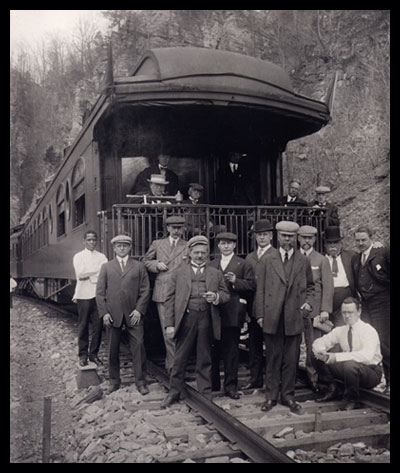
The work of building the Virginian Railway began in West Virginia in the name of the Deepwater Railway Company. Rogers named William N. Page president of the newly formed organization. When Rogers took a hand in directing the affairs of the Deepwater, his first act was to have its charter amended to extend to the West Virginia boundary line. The company’s charter was revised in September, 1902. In approximately a year and five months, the Tidewater Railway was chartered in the state of Virginia with its boundary extended to the line of the two Virginias that would connect the two Railways.
W. N. Page became president of both railways. Rogers’ ownership of the two projects did not become known until 1907 when the Virginian Railway was incorporated.
Sixty four percent of the excavation in West Virginia consisted of solid rock. The majority of the excavation was done by hand labor, mules and carts. Upwards of 50 steam shovels, 1,200 dump cars, and 124 locomotives were used in the excavation of the cuts and tunnels. At the height of the construction more than 10,000 laborers were employed.
At the time the Virginian began construction, there was not a single mine development on the main line. By 1933, 91 mines were developed by the Virginian. It shared in the development of 47 mines on connecting lines which it acquired or built for a total of 138 working mines.

